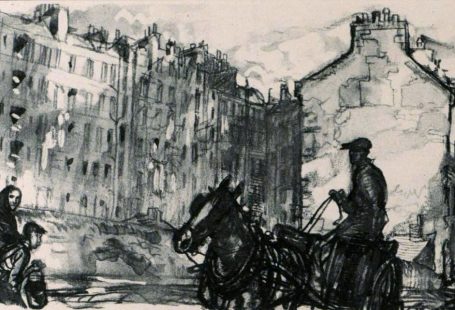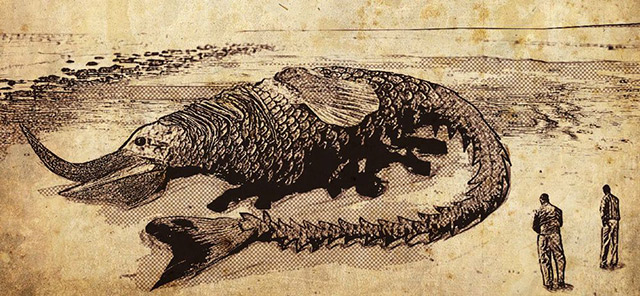This week on The Archive we continue to bring you our top picks from our collection of specialist, national and regional newspapers. And in this vein, we turn our spotlight this week onto our very special suffragist newspapers, which chart how women across the British Isles and Ireland campaigned for the vote.
Register now and explore the Archive
Newspaper of The Week
One of the most iconic of these titles is The Suffragette, later renamed Britannia. This newspaper was established in 1912, and was edited by Christabel Pankhurst. But this week we will be concentrating on a different suffragist title, which was something of a rival to The Suffragette, and continued to be published beyond the 1918 Representation of the People Act, which gave propertied women over the age of 30 the right to vote.
This newspaper was The Vote, which began publication in 1909, and ran to 1933. The Vote was the newspaper of the Women’s Freedom League, which emerged as an offshoot from the militant suffragettes in 1907.
Number of Pages | Year Range |
| 18,732 | 1909-1933 |
The Women’s Freedom League opposed the violent tactics employed by the Pankhursts and the W.S.P.U. (Women’s Social and Political League). So in 1907 77 former members of the W.S.P.U, including Teresa Billington-Craig, Charlotte Despard and Margaret Nevison, banded together and formed the Women’s Freedom League. The Women’s Freedom League championed non-violent forms of protest, including non-payment of taxes, and failing to complete census forms in 1911.
As membership grew to approximately 4,000, The Vote became the mouthpiece of the Women’s Freedom League. A weekly publication, it was the primary means of communication for the organisation and contained news of campaigns, protests and events. During the First World War, it campaigned against the conflict.
And even after the Representation of the People Act was passed in 1918, The Vote continued to be published, addressing the widespread inequality that was still faced by women across the domestic and public spheres. It contained interviews with women in a variety of fields, covering the latest suffrage news from places such as Japan and Spain, as well as celebrating female figures from the past, like Florence Nightingale.
Are Women MPs Necessary?
In February 1920, The Vote ran with the provocative headline ‘Are Women MPs necessary?’ as it interviewed one Margaret Bondfield, who had been selected by the Northampton Labour Party as their candidate for the next election. For although two women had already been elected to parliament (Countess Markievicz being the first, although she did not take her seat, and Nancy Astor the second), there were still great steps to be made in involving women in the business of government.
And of course, The Vote was overwhelmingly of the opinion that women MPs were necessary, writing in large capital letters on the same front page The House That Needs Women! and publishing its appeal for the Women in Parliament Fund:
We must have Women in Parliament, and if we want them we must send them there. The best of Candidates cannot do everything. Election expenses have to be met, and they are very heavy. Remember it takes several hundred pounds to run one election, but it has to be done. I must therefore call upon you who understand our aims and read our paper to send me your contribution (as much and as often as possible) so that our special Women in Parliament Fund will be ready for immediate use.
Margaret Bondfield was ready and prepared to take on such a challenge. Born in Somerset in 1873, and having worked since the age of 13, first as a teaching assistant and then as a draper’s assistant, Bondfield had long been an advocate of the working classes. She was particularly notable as being the ‘only woman delegate to the Trades Union Congress of 1899’ (Yorkshire Evening Post). And when posed The Vote’s question on the necessity of female MPs, she replied: ‘We shall never reach a satisfactory State until we have the recognition of the citizen irrespective of sex.’
 Margaret Bondfield | The Vote | 13 February 1920
Margaret Bondfield | The Vote | 13 February 1920
Indeed, Bondfield issued something of a challenge to other women, aware of the sacrifices that must be made for women to enter into public office:
Women…must be prepared, as I believe they are prepared, to do hard, grinding, unrecognised work. They must be prepared…to put the cause first, and their private lives and private interests a very long way second. The call which comes to a woman for public work should be treated with great seriousness. She must face the fact that since the war numbers of women will not have the opportunity to marry. Is not this just the right time when women should thoroughly overhaul this whole question of marriage, and regard it in future only as a vocation to which not all are called?
And although Bondfield was defeated in both the elections of 1920 and 1922, she was returned as MP for Northampton in 1923. She made further history in 1924 when she was appointed Under Secretary for the Ministry of Labour, becoming the ‘first woman member of the British Government.’ In the same year, she became the first woman to chair the Trades Union Congress General Council.
Dundee Courier | 24 January 1924
More firsts were in store for the pioneering Bondfield. In 1929 she was appointed Minister for Labour, making her the first woman to hold a ministerial position in British government. The Sheffield Daily Telegraph in 1925 calls her a ‘pioneer, a plucky and energetic woman,’ and it is clear to see in her 1920 interview with The Vote from where she got her drive and her determination, her grit to succeed in a male-dominated world.
Margaret Bondfield | Illustrated London News | 28 October 1922










